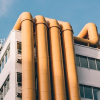Intrinsic safety (IS) is a method of designing electrical equipment so it can’t cause a fire or explosion, even if something goes wrong. It does this by limiting the amount of energy the equipment uses, so it’s not strong enough to ignite flammable gases, vapors, or dust.
This approach is essential in industrial environments where flammable substances are present. In such hazardous areas, intrinsic safety has become a key standard, protecting people, assets, and operations while allowing equipment to function reliably and safely during both normal use and maintenance.
Principles and Design behind Intrinsic Safety
Intrinsic safety is based on the principle of energy limitation. IS devices use barriers, isolators, or specially designed circuits to ensure that even in the event of a short circuit or failure, the energy released is too low to cause combustion. This is achieved by using energy-limiting barriers that regulate electrical flow and eliminate the risk of sparks, excessive heat, or other possible ignition sources.
For example, sensors, transmitters, and control systems used in IS environments are designed with:
- Low-voltage, low-current electronics
- Energy-limiting safety barriers
- Galvanic isolation
The design must account for both normal operating conditions and potential faults, ensuring there’s no risk of sparking or heating that could trigger an explosion.
Why is Intrinsic Safety Important?
Intrinsic safety is essential in environments where flammable gases, vapours, or dusts are present, as even a small spark or hot surface from electrical equipment can trigger a devastating explosion. Intrinsically safe (IS) equipment is specifically designed to eliminate this risk by ensuring that electrical and thermal energy levels remain below the threshold required for ignition.
By preventing sparks and excessive heat at the source, IS systems offer a highly reliable and preventative approach to explosion protection. This not only safeguards personnel and assets but also reduces the need for complex protective enclosures or purging systems. As a result, installation and maintenance become safer, faster, and more cost-effective, especially in hazardous zones where shutting down operations can be both risky and expensive.
Intrinsically safe equipment is required in hazardous areas, which are classified into zones based on the type and frequency of explosive atmospheres present:
- Zone 0 – explosive atmosphere present continuously or for long periods
- Zone 1 – likely to occur in normal operation
- Zone 2 – unlikely to occur, or only for short durations
Learn more about hazardous area zone classification.
Intrinsic safety is typically required for equipment used in Zone 0 and Zone 1 areas. In Zone 2, depending on the risk assessment, either IS or less rigorous protections may be sufficient.
Industries where intrinsic safety is critical include:
- Oil and gas
- Chemical processing
- Mining
- Pharmaceuticals
- Grain storage and milling
Compliance Standards for Intrinsically Safe Equipment in Australia and New Zealand
In Australia, intrinsically safe equipment must meet strict national and international standards to ensure safe operation in hazardous environments. At Transtech, our IS products are certified to meet the requirements of IECEx, ATEX, and SIL, reflecting the highest levels of safety and reliability.
- IECEx – An internationally recognised certification system accepted in Australia and many other countries
- ATEX – Mandatory for equipment used in explosive atmospheres within the European Union
- SIL (Safety Integrity Level) – Measures the reliability and performance of safety systems, especially in high-risk applications
These certifications confirm that our products have undergone rigorous testing and approval by accredited bodies. By choosing certified equipment from Transtech, you’re ensuring compliance, safety, and performance in even the most demanding hazardous zones.
At Transtech, we provide high-quality electrical components such as IS / Zener barriers to ensure efficient operation of your process in hazardous area.
Need advice on intrinsically safe equipment?
Contact Transtech or email info@transtech.com.au to speak with our specialists. We’ll help you select or tailor the most reliable and compliant equipment that comply with international and Australian safety regulations for your hazardous environment.








